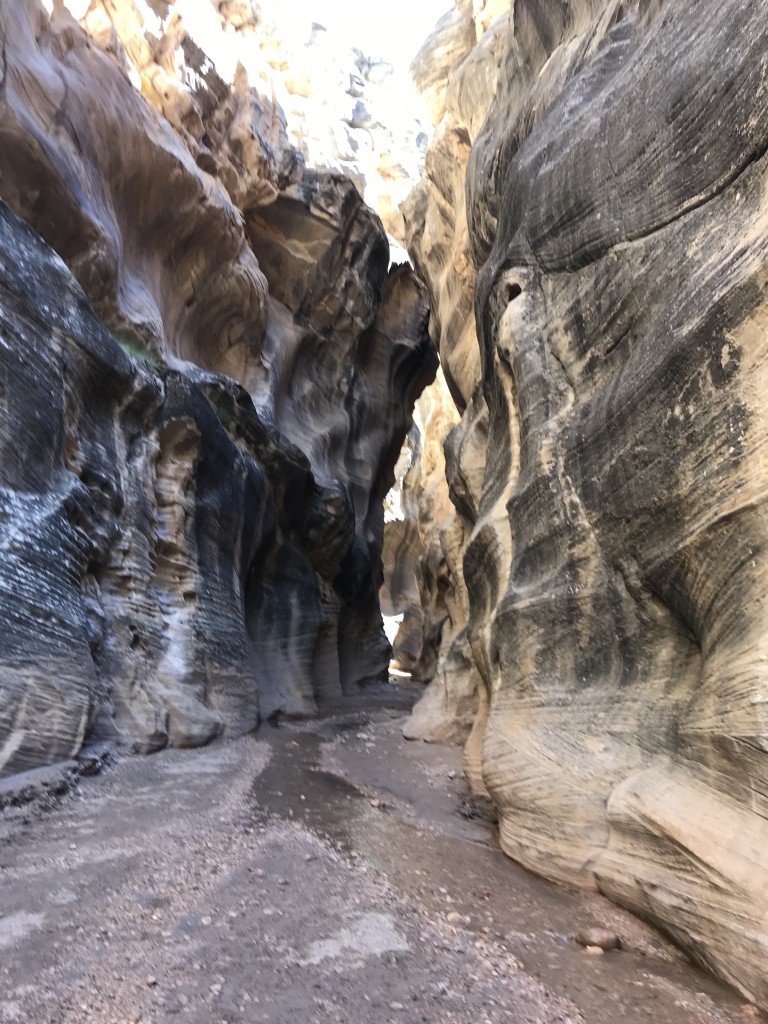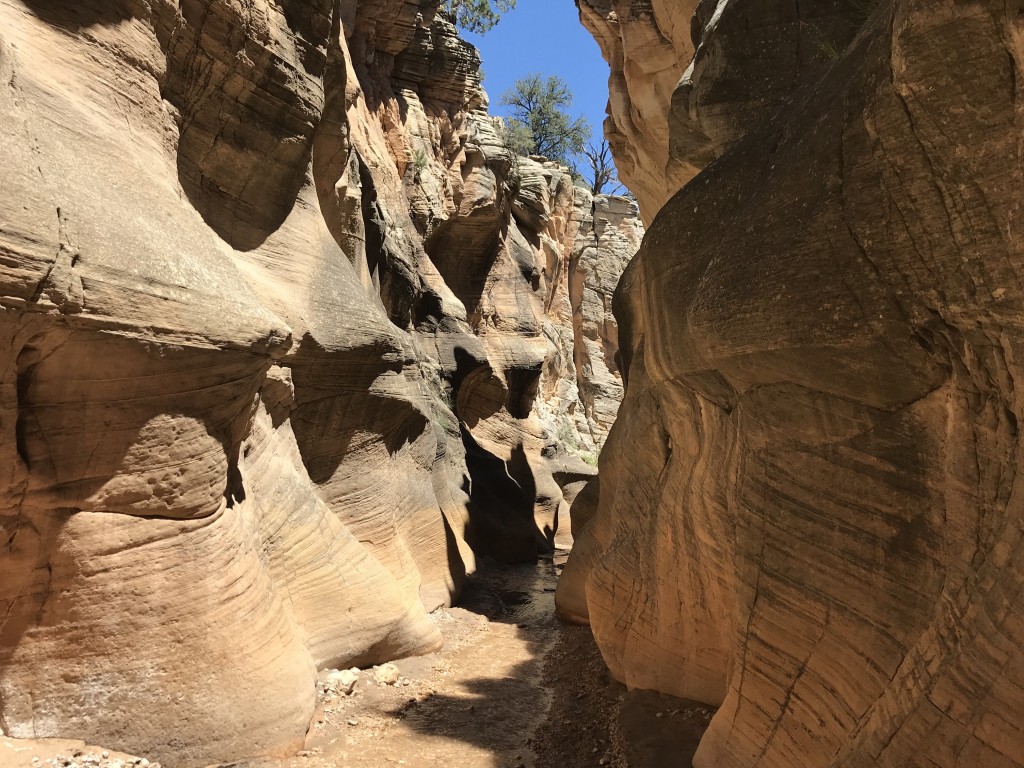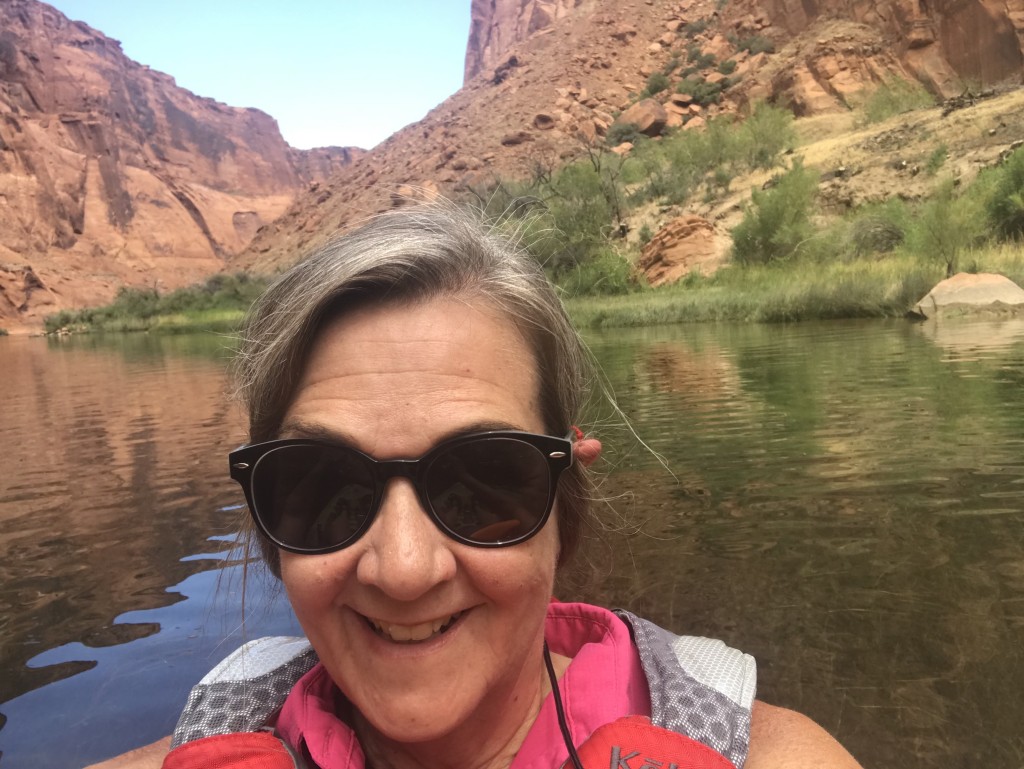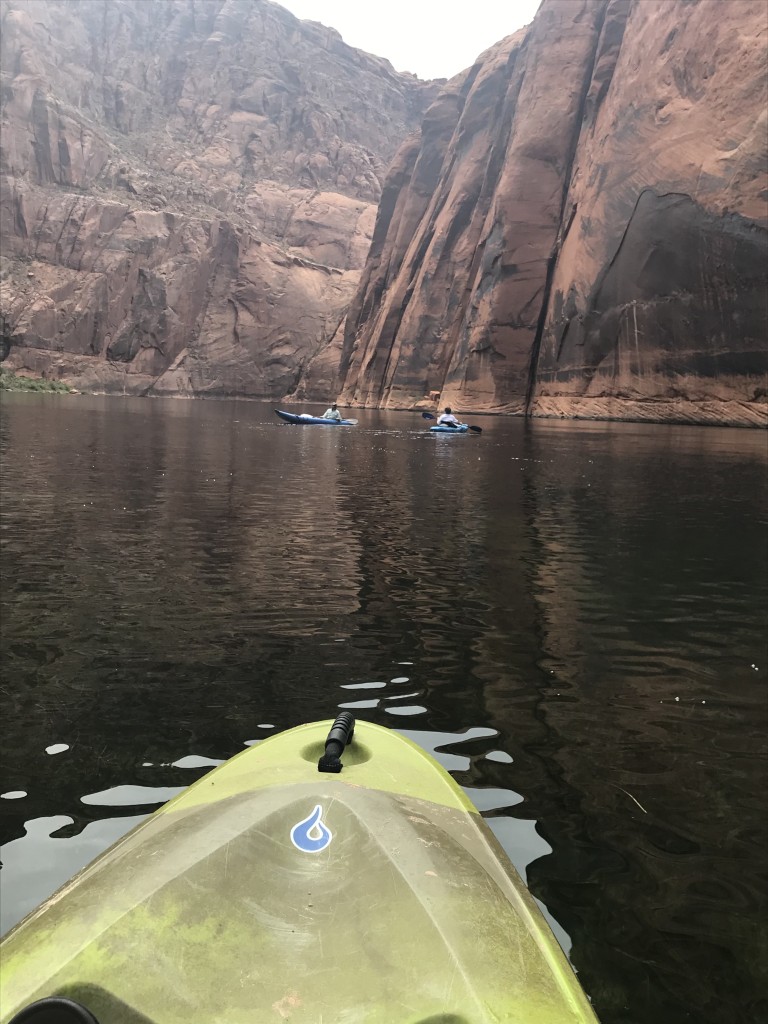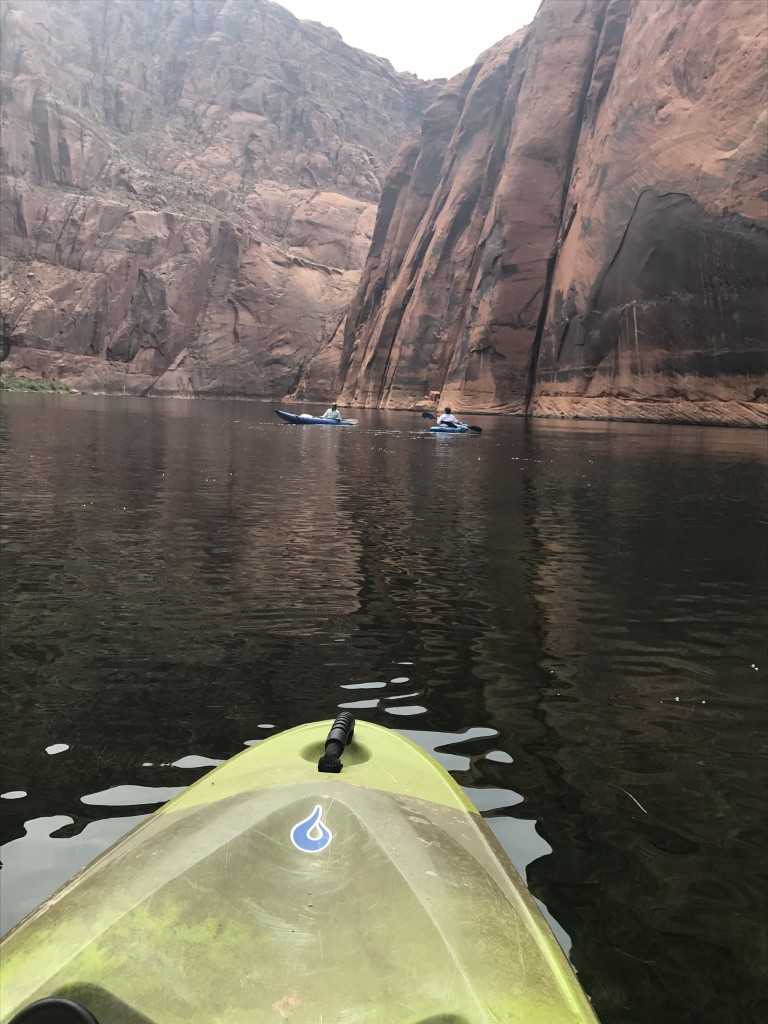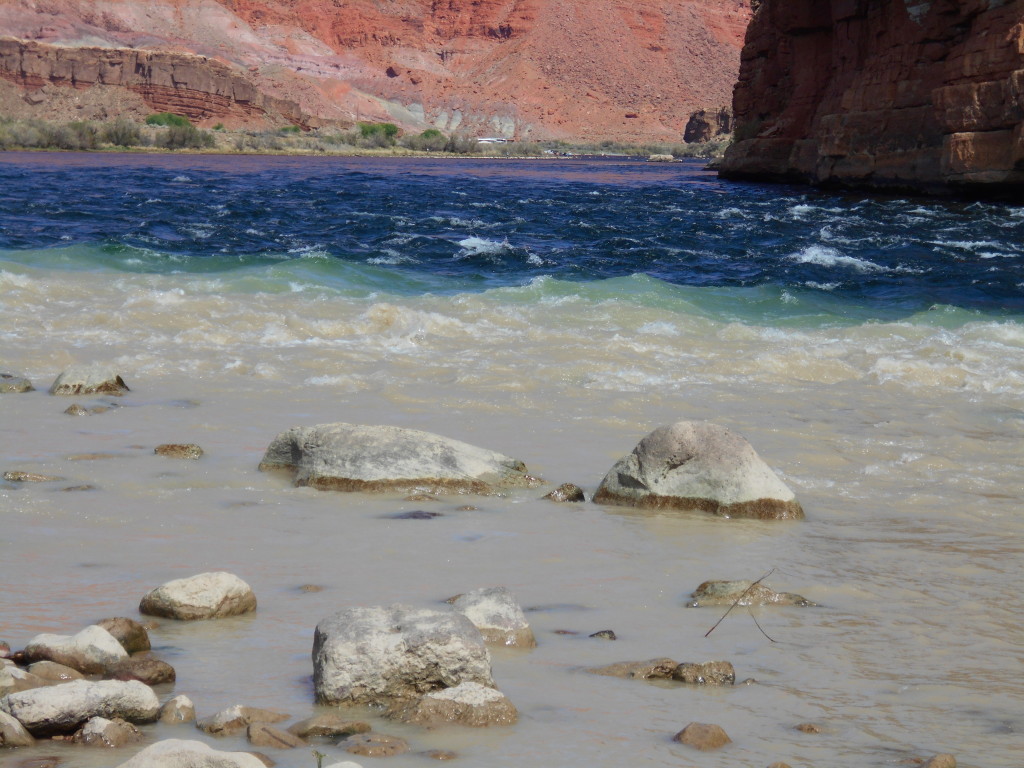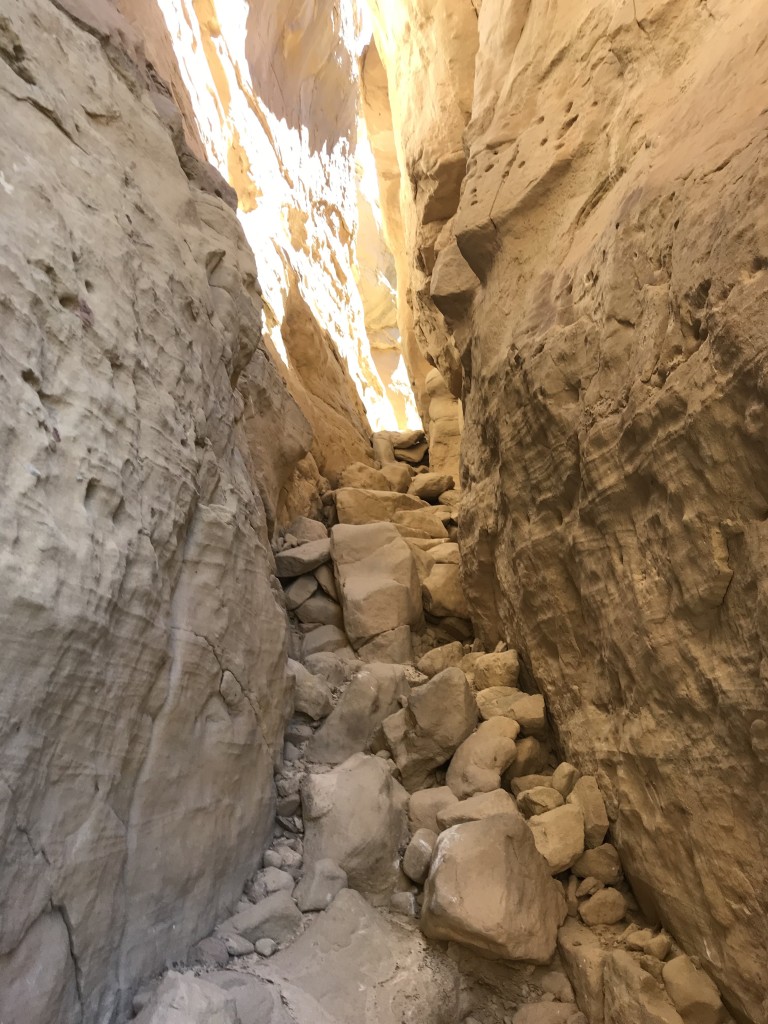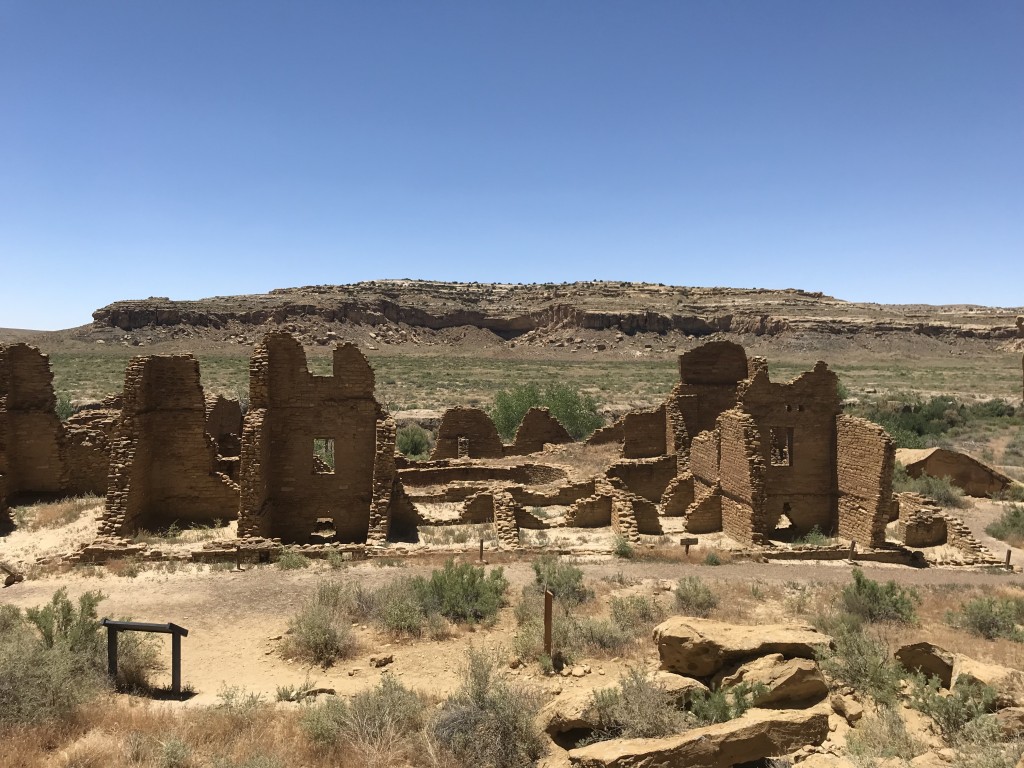Willis Creek
She stood in the shade by a small desert creek to refresh herself and prepare her mind for a return hike of the 10 miles she had just completed. Again, she checked the vehicle for signs the guys had been there. Vacant. She left signs of her own presence. A bandana tied to the luggage rack – in case they were also looking for her.
She knew exactly where she and her hiking partner had overshot the return trail. What she could not figure out was where they had bypassed the guys. If they were not waiting at the vehicle, they should have intersected two miles ago. Her hiking partner was convinced the guys were out looking for them.
In her mind she reviewed the information gained from the internet previous to setting out on the trip: Nice family hike. Under six miles. Hard to miss because the trail goes straight down a slot canyon. Five miles round-trip to the end and back. Approximate travel time: 2.5 hours. It had been four hours.
In the beginning, the girls had no intention of splitting off from the guys. Five people, journalists of varying degrees, began the hike together that day. They met a couple hours after dawn, packed into a Jeep like sardines, and jostled two hours up a dirt road to the trailhead, stopping to search out geological features along the way. Arriving at Willis Creek Trailhead, they began the hike in leisurely fashion, taking time to savor the illumination of morning sun on sandstone and to luxuriate in reflections of shadowed pools. Two of the guys were photojournalists. They carried the gear necessary to their art and wielded it for photo ops both posed and candid. A mile and a half into the hike, the girls – both avid hikers – began to move ahead by increasing distances. Hunger sat in. They found an inviting log at a place where the canyon widened. They sat for several minutes killing time in conversation and nourishment. Still no guys. They looked and listened up the canyon. Still no sign of the guys. Her hiking partner helloed and yahooed up the canyon. No response but an echo. So the girls pressed ahead through the ever-widening canyon, walking mostly on soft sand of a creek bed. After a mile of wide creek bed and still no sign of the guys catching up, the girls reversed their route and headed back. They followed the creek. They met no one. They noticed a picturesque tree fallen across the creek. Was that there before? Perhaps we walked under it without noticing. They found fresh desert bighorn tracks in the mud. Very fresh. We did not see those on the way. Soon she said to her hiking partner, “We should be in the slot by now.”
“Did we take a wrong canyon?”
“How is that possible? We have followed the creek all the way back. Let’s just go around this next bend and see what we find.” They did. They found a fence.
“I am sure,” she said, “we could follow this canyon on the left and end up just above the parking lot. But we don’t know the condition of this canyon, there may a dry fall too deep to scale, and we don’t want to miss the guys.”
“Do you think they are searching for us by now?”
Accordingly, they made a 180 and retraced their steps. Looking, always looking to the right for the turn they somehow missed. Presently, the telltale signs of plodding hardship began.
Her: I didn’t bring matches.
She: I have matches.
A quarter mile further.
Her: I don’t want to spend the night in a canyon.
She: The sun is still high.
Another quarter mile.
Her: I didn’t pack that blanket.
She: I have a space blanket (and a headlamp, and paracord, and a whistle, and a windbreaker, and snacks and tissues and two bandanas and a tiny first aid kit. I think I packed too much).
Another mile, another biographical conversation. The girls were getting to know each other better.
Her: Look! There’s the log where we ate lunch.
She: Good grief, how could I have missed it? I didn’t realize we took a sharp turn into Sheep Creek just as we stopped to eat lunch!
No time to lose now. Surely the guys must be up ahead, waiting impatiently. The girls hurried to catch them.
The girls arrived at the Jeep. No guys. No evidence the guys had even been there. Exhausted, the girls propped hiking poles against the door of the Jeep and found a shady place to rest just over a small hill.
Twenty minutes later, while she was still debating going after them, the guys strolled into the parking lot.
“Where were you?” They asked. “How did you make it back before we did? We followed footprints about a mile down Sheep Creek until they ended and then we turned back. How did we not see you?”
The guys had made a leisurely time of it, poking up side canyons to find just the right photo angle, dawdling in the dappled light of photogenic vegetation to catch close-ups. All the while expecting to meet up with the girls at any moment.
She pulled out a phone and checked her mileage: Ten miles.
He checked his: Six miles.
The girls had out-stripped the guys by four miles simply by missing a turn into Willis Creek. Instead, they headed on up Sheep Creek. 10 miles! Not bad, not bad at all for two girls in their 60s.
Yes, it’s hard to miss, but you can do it!
